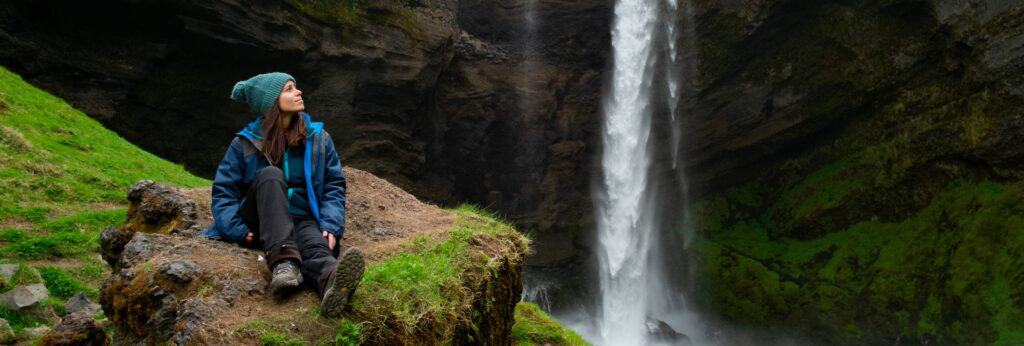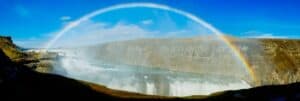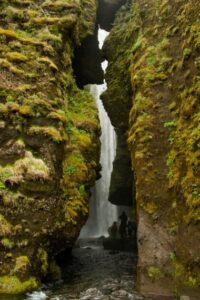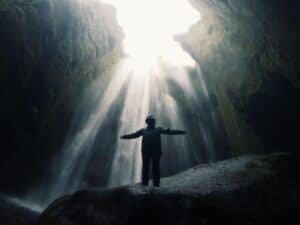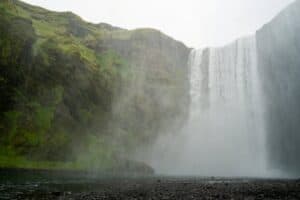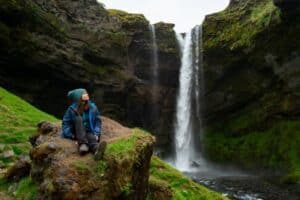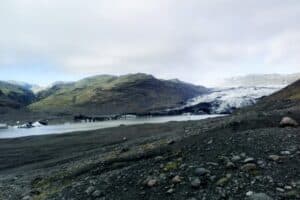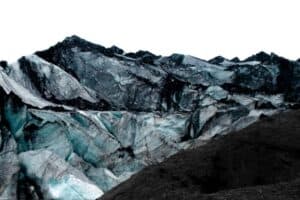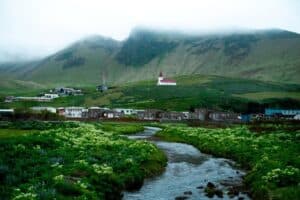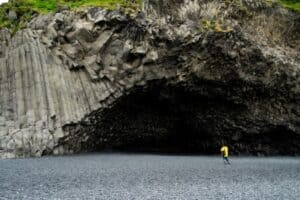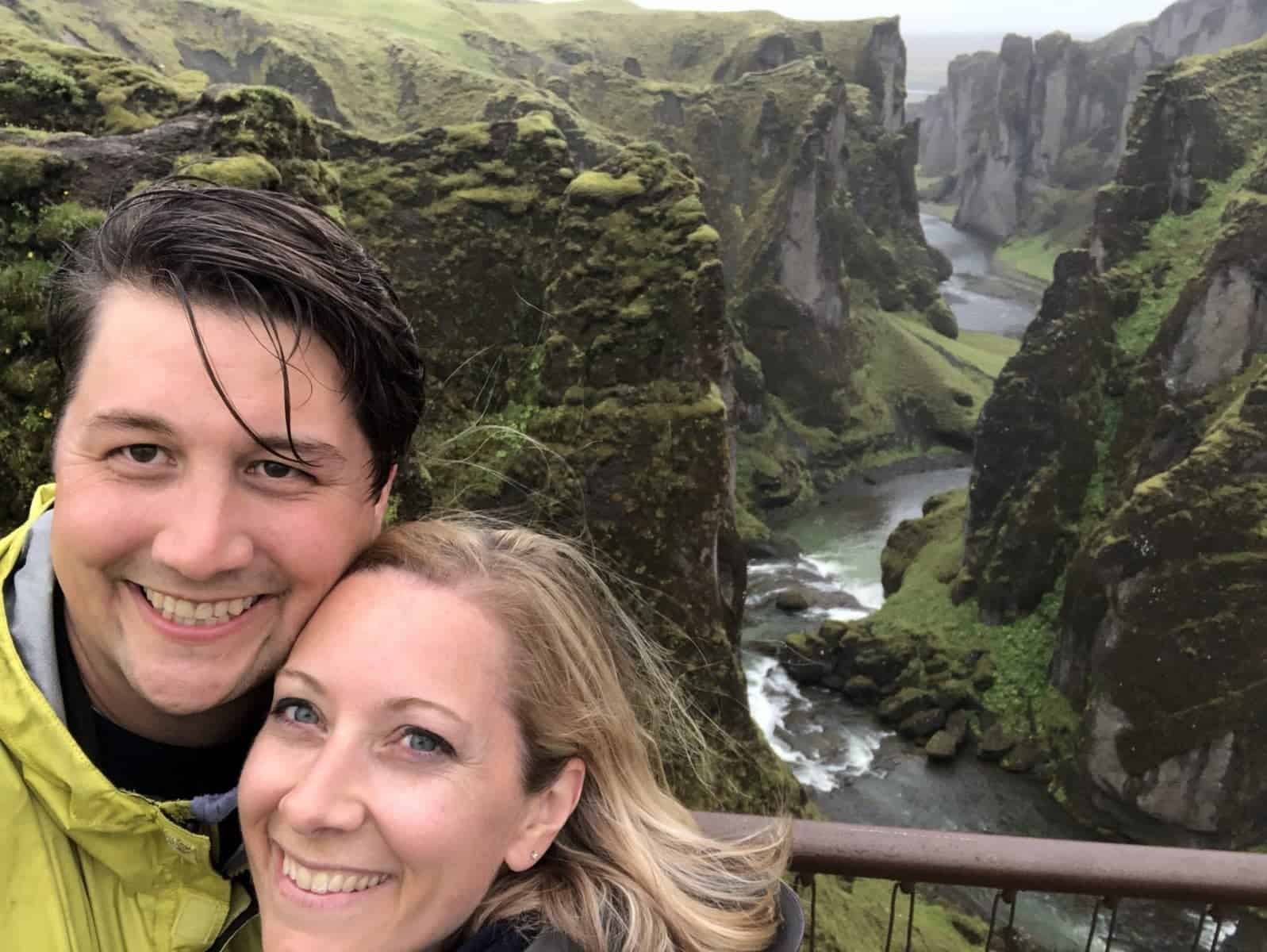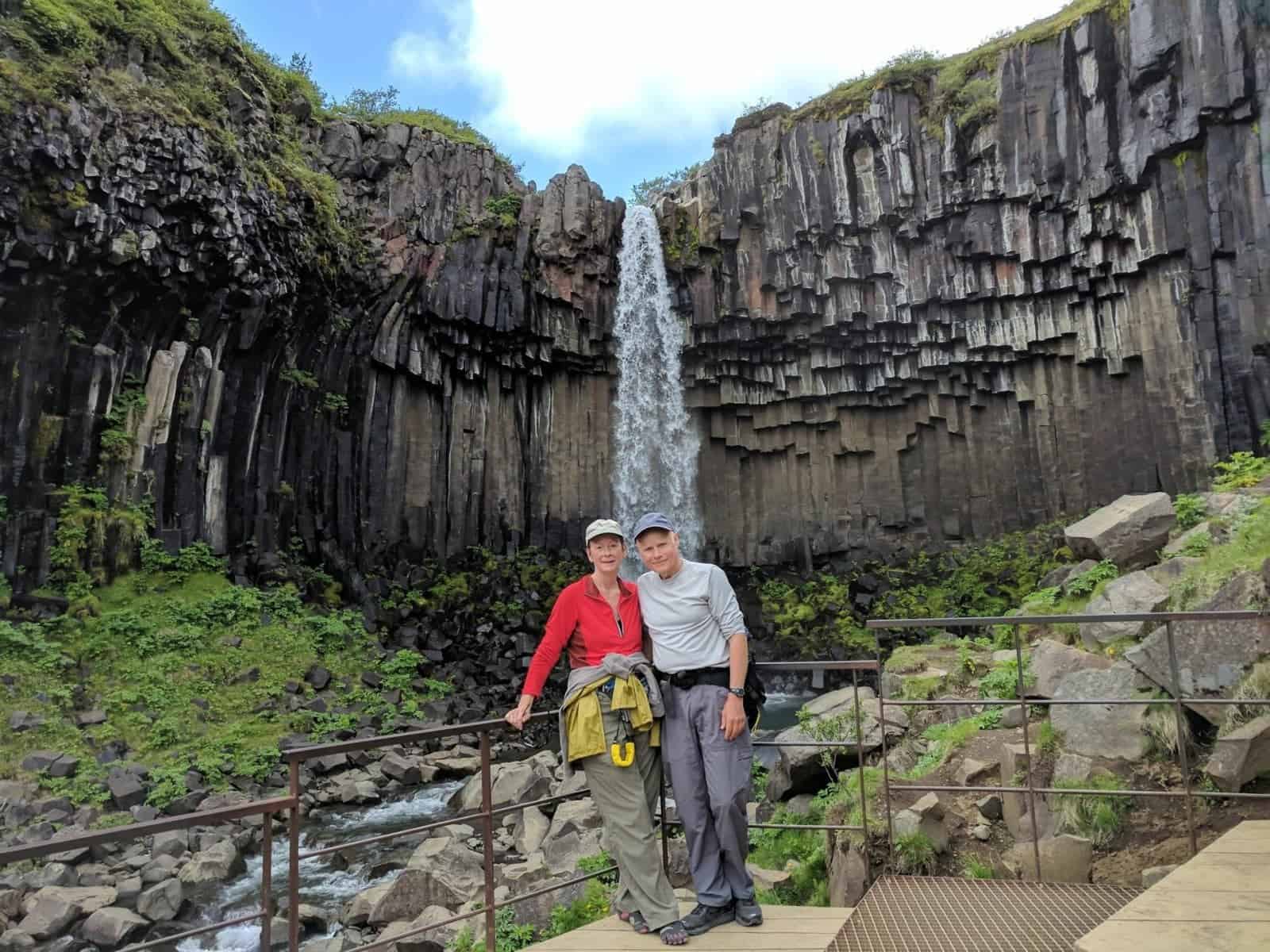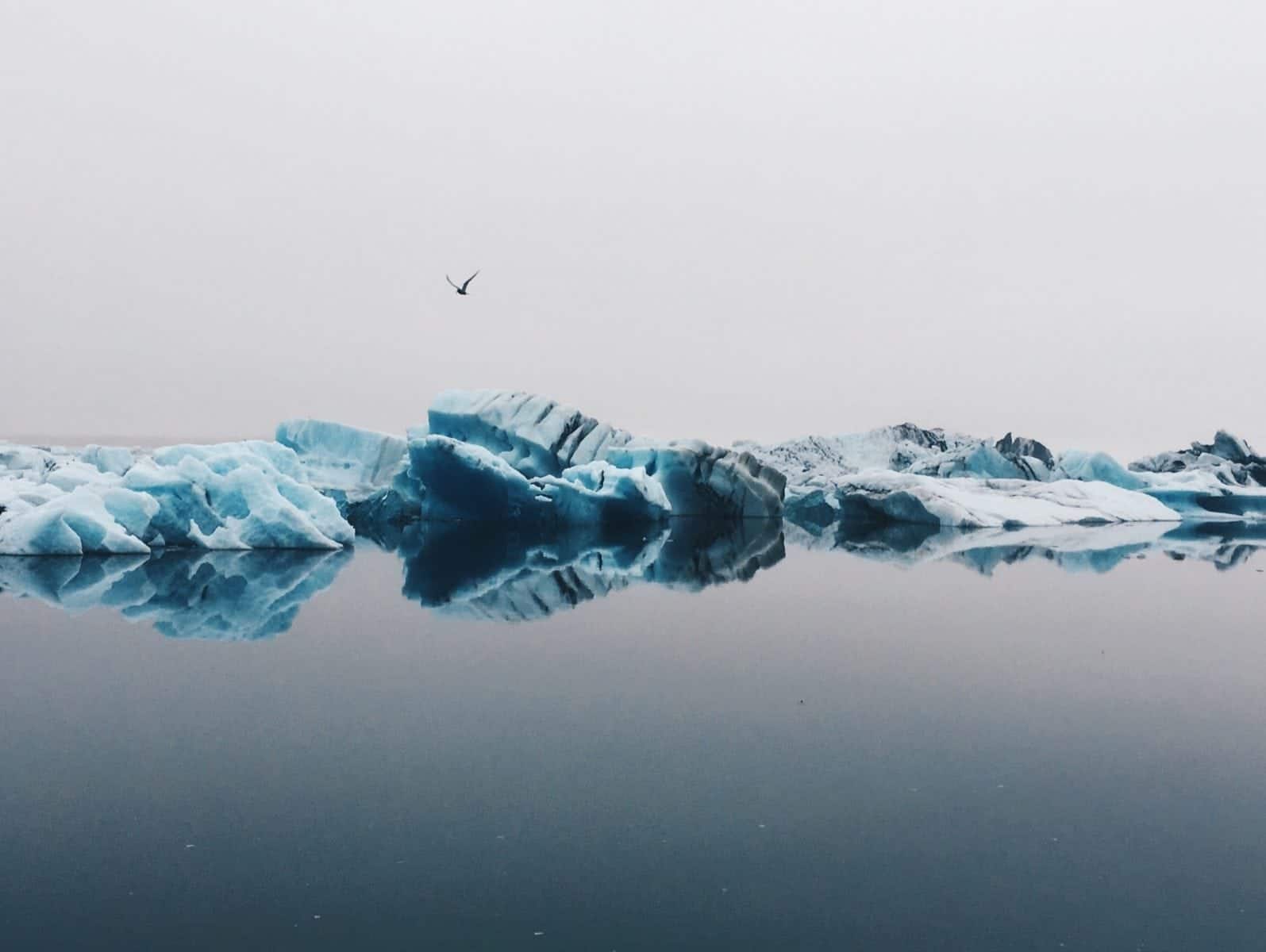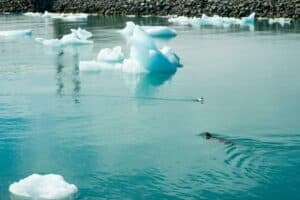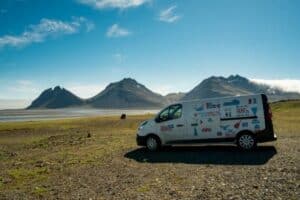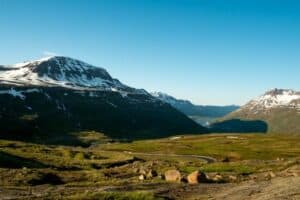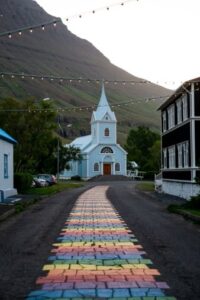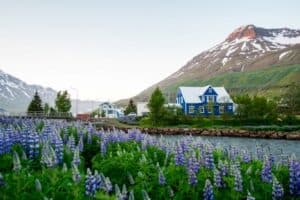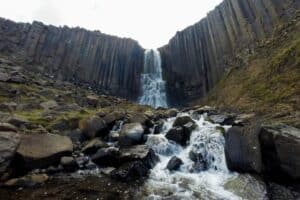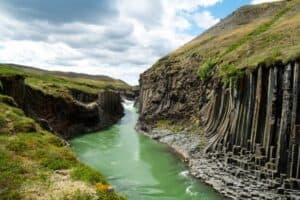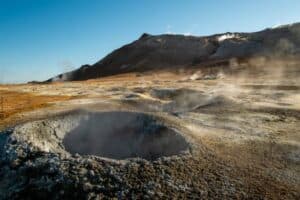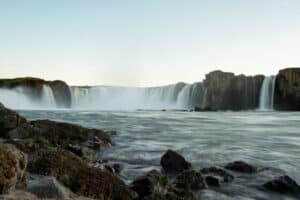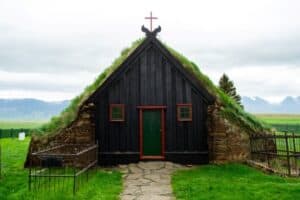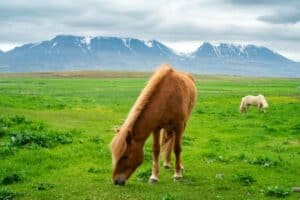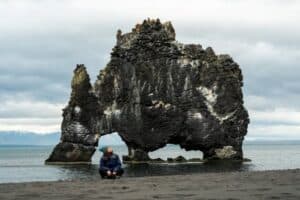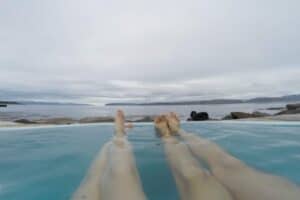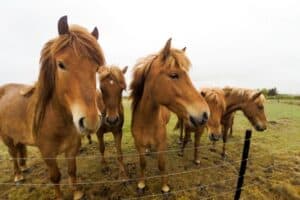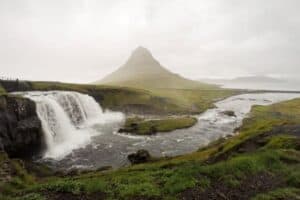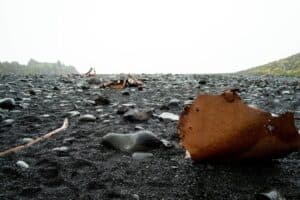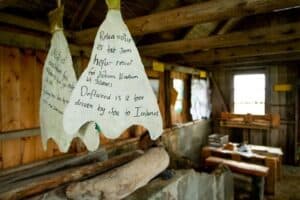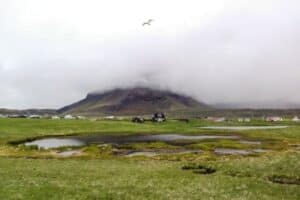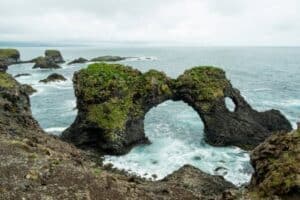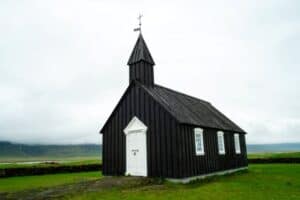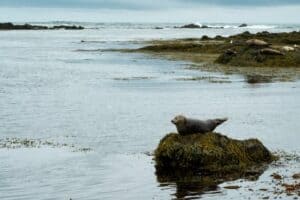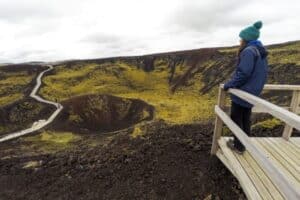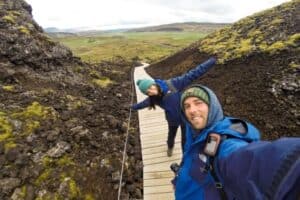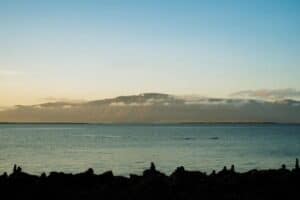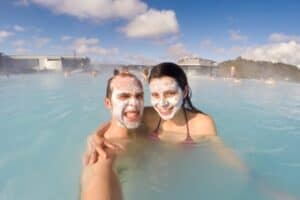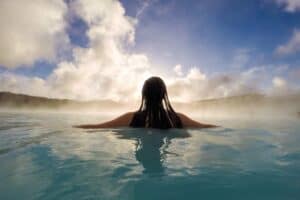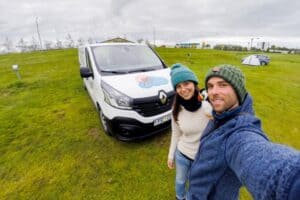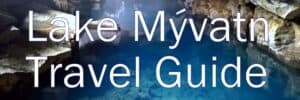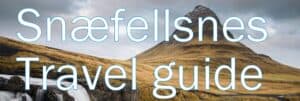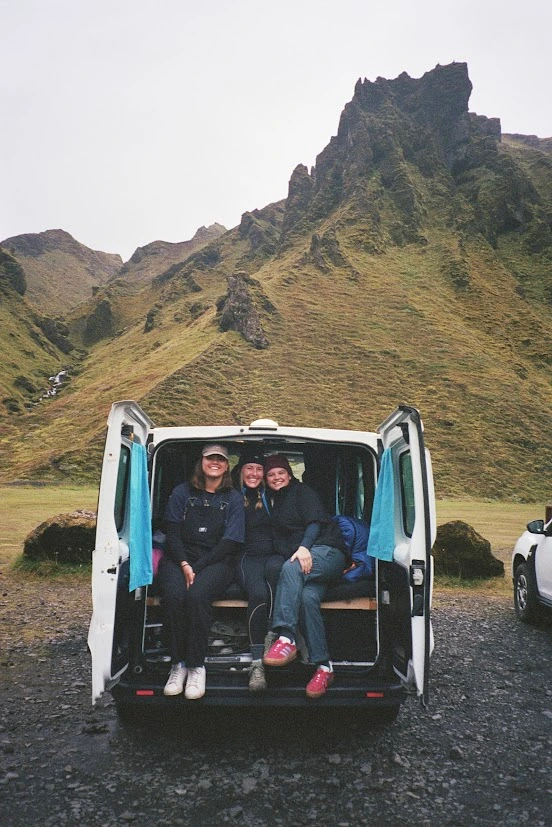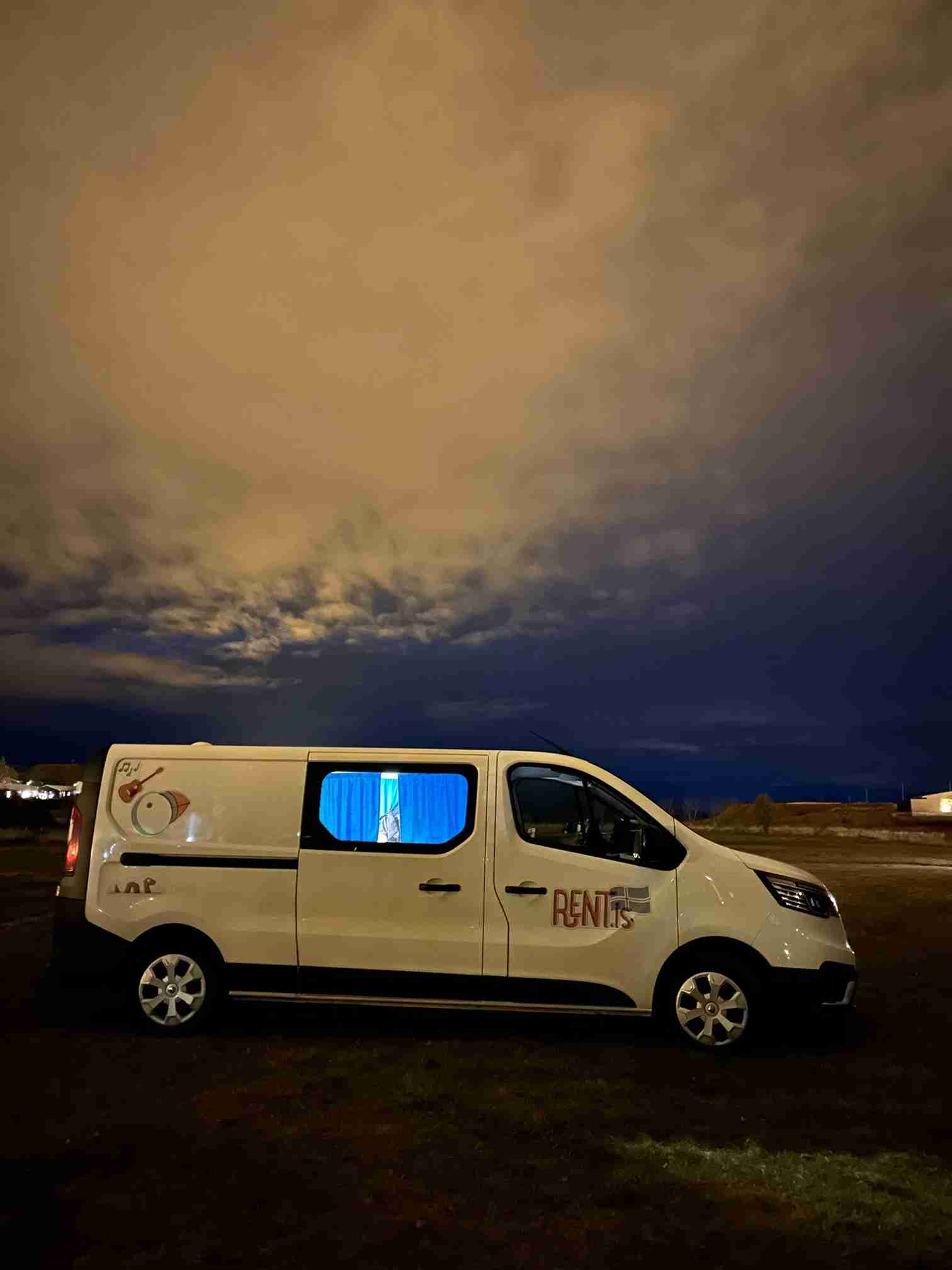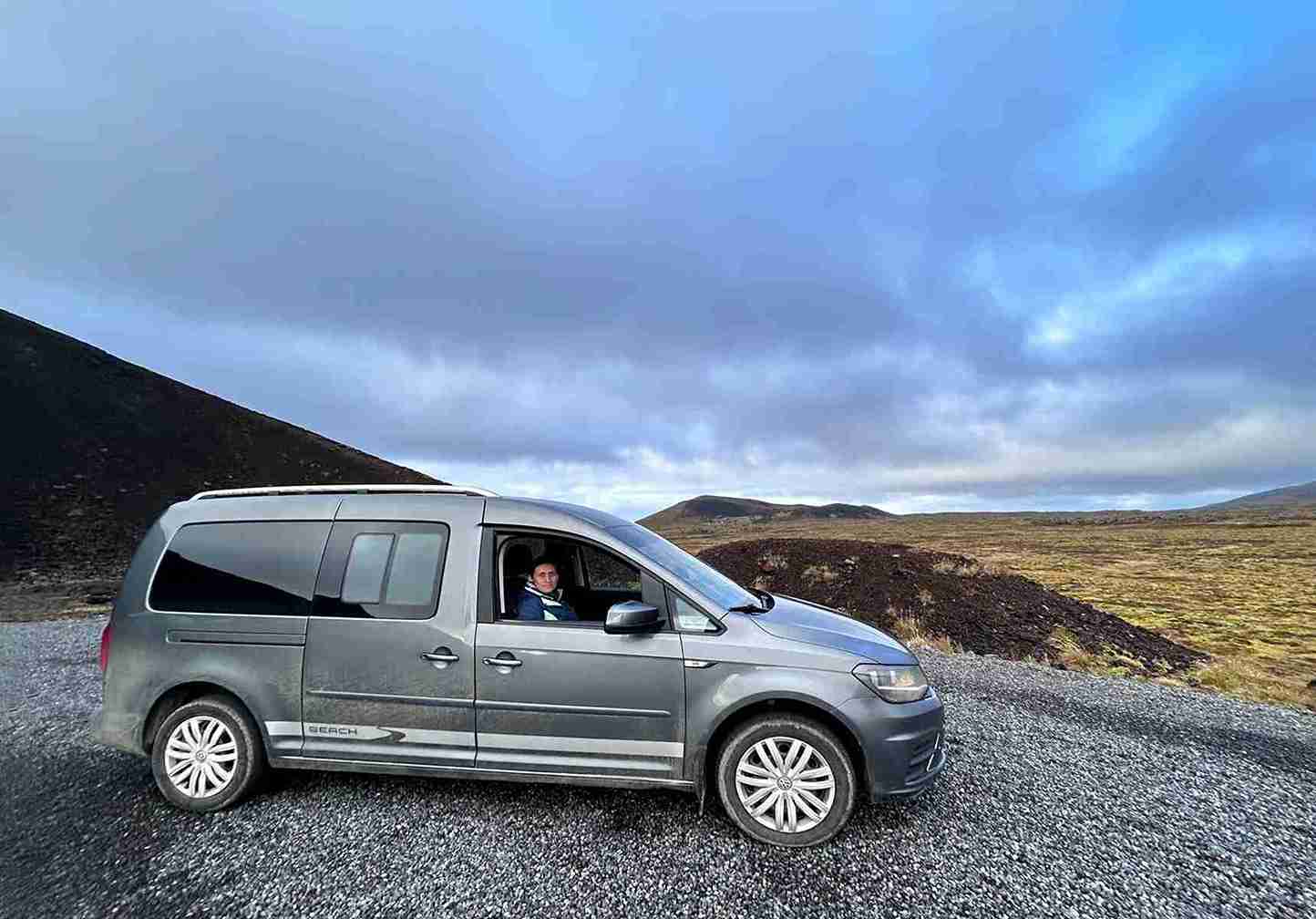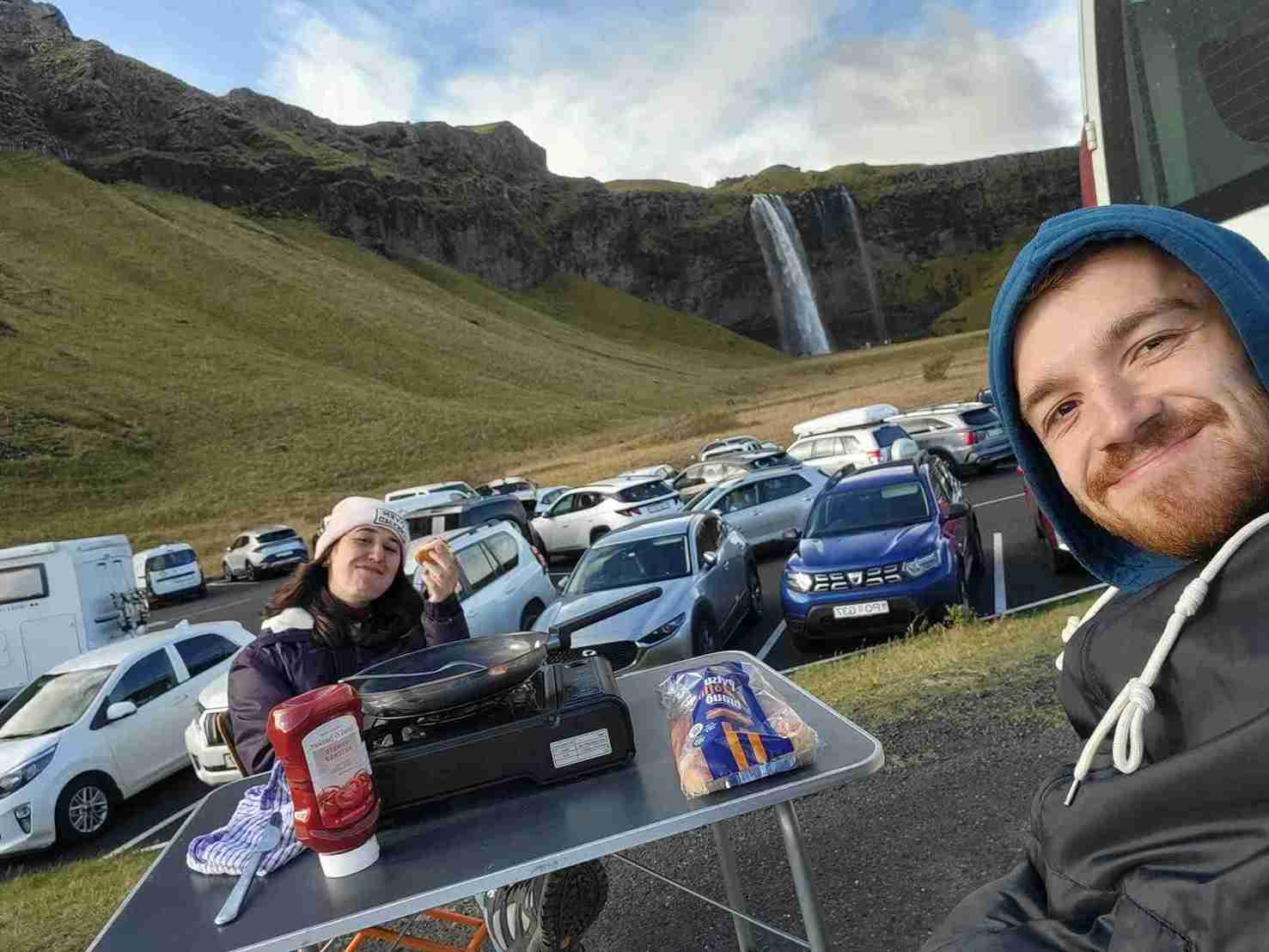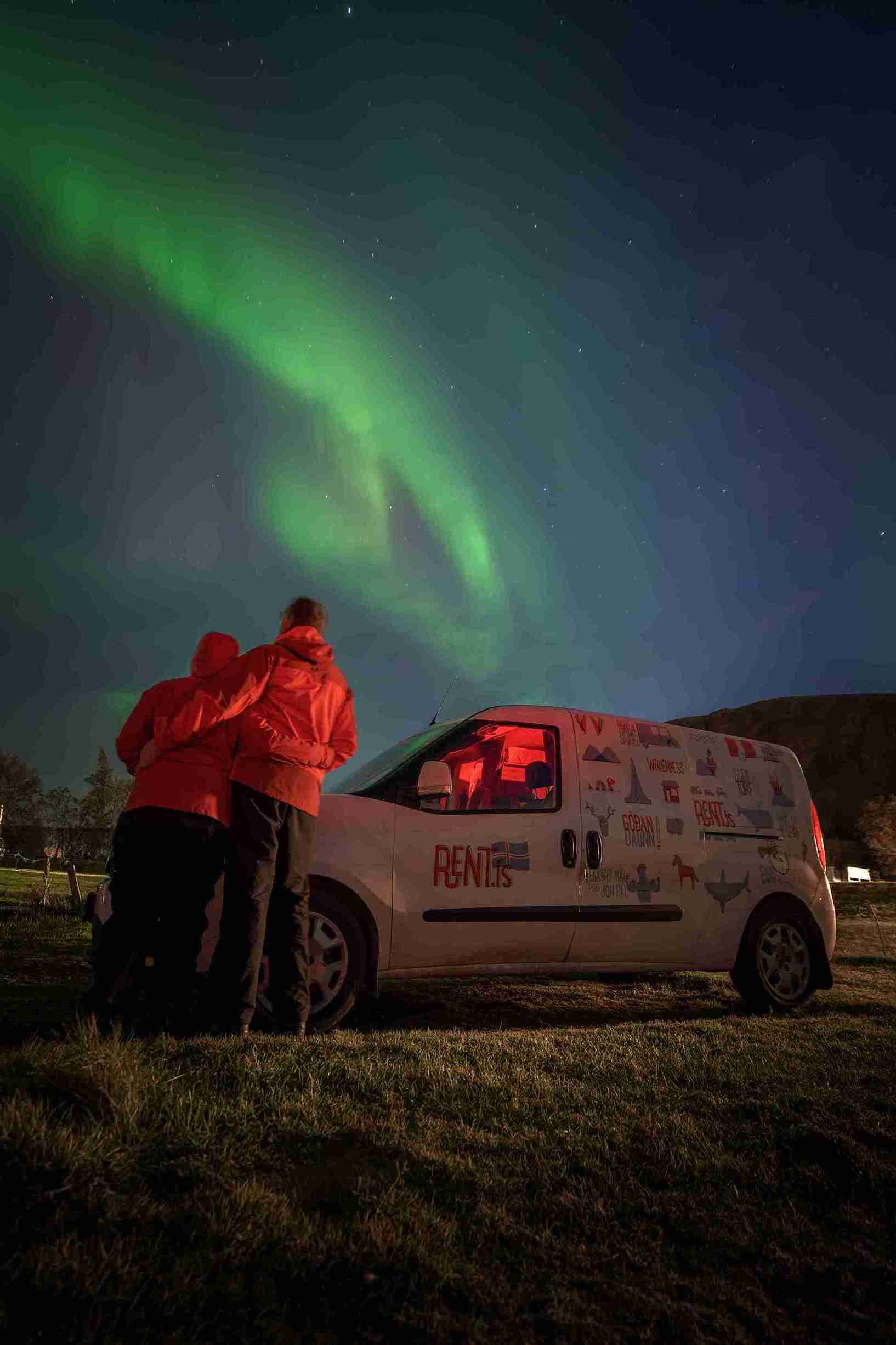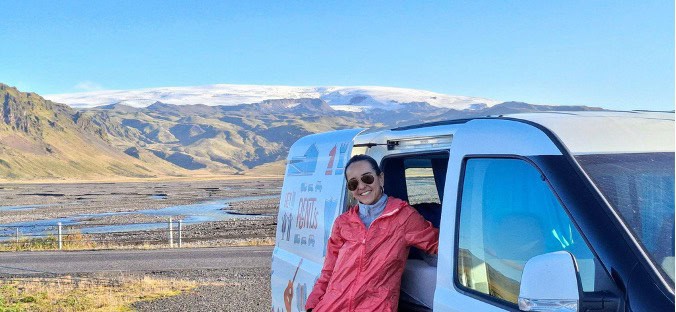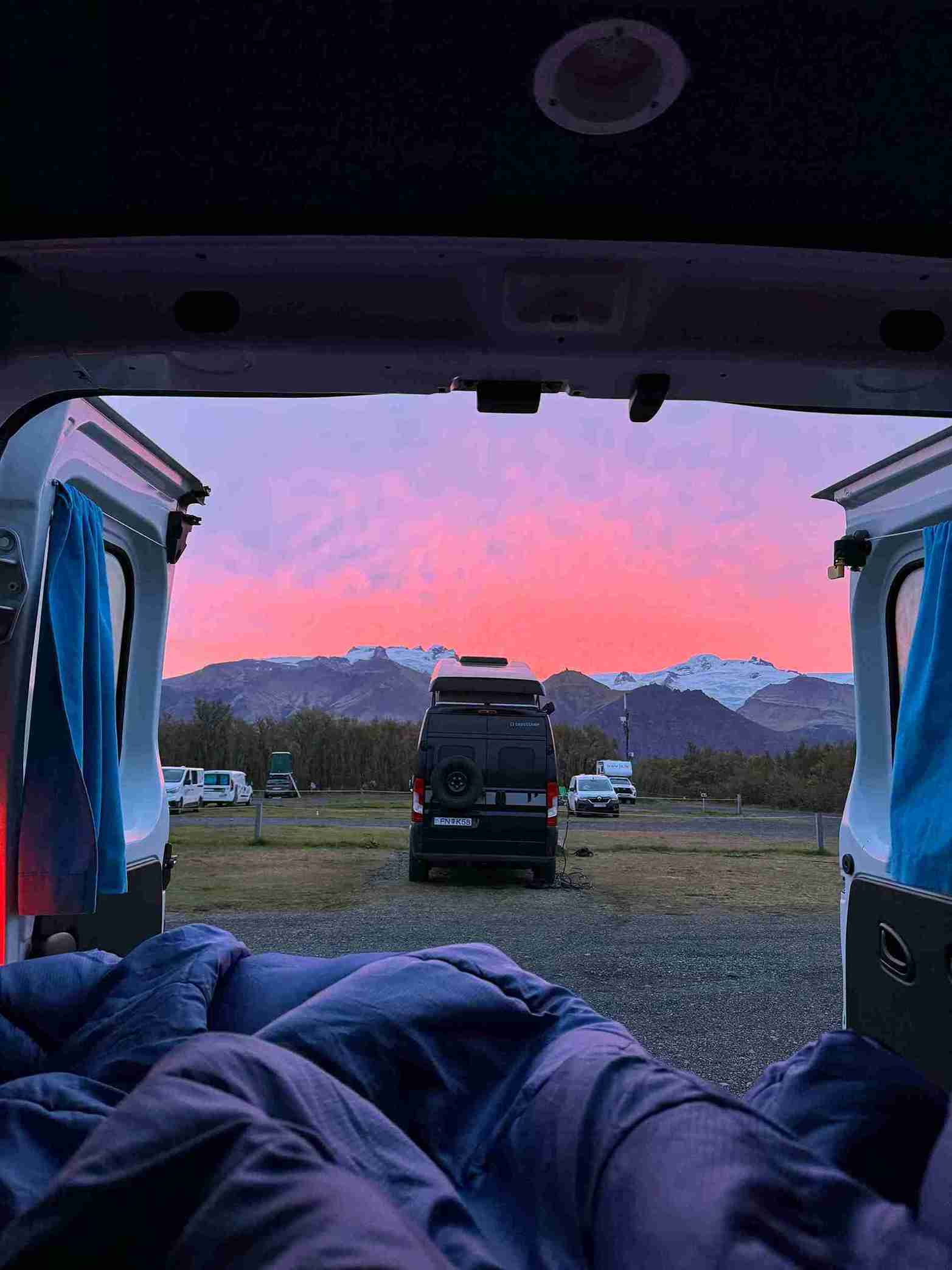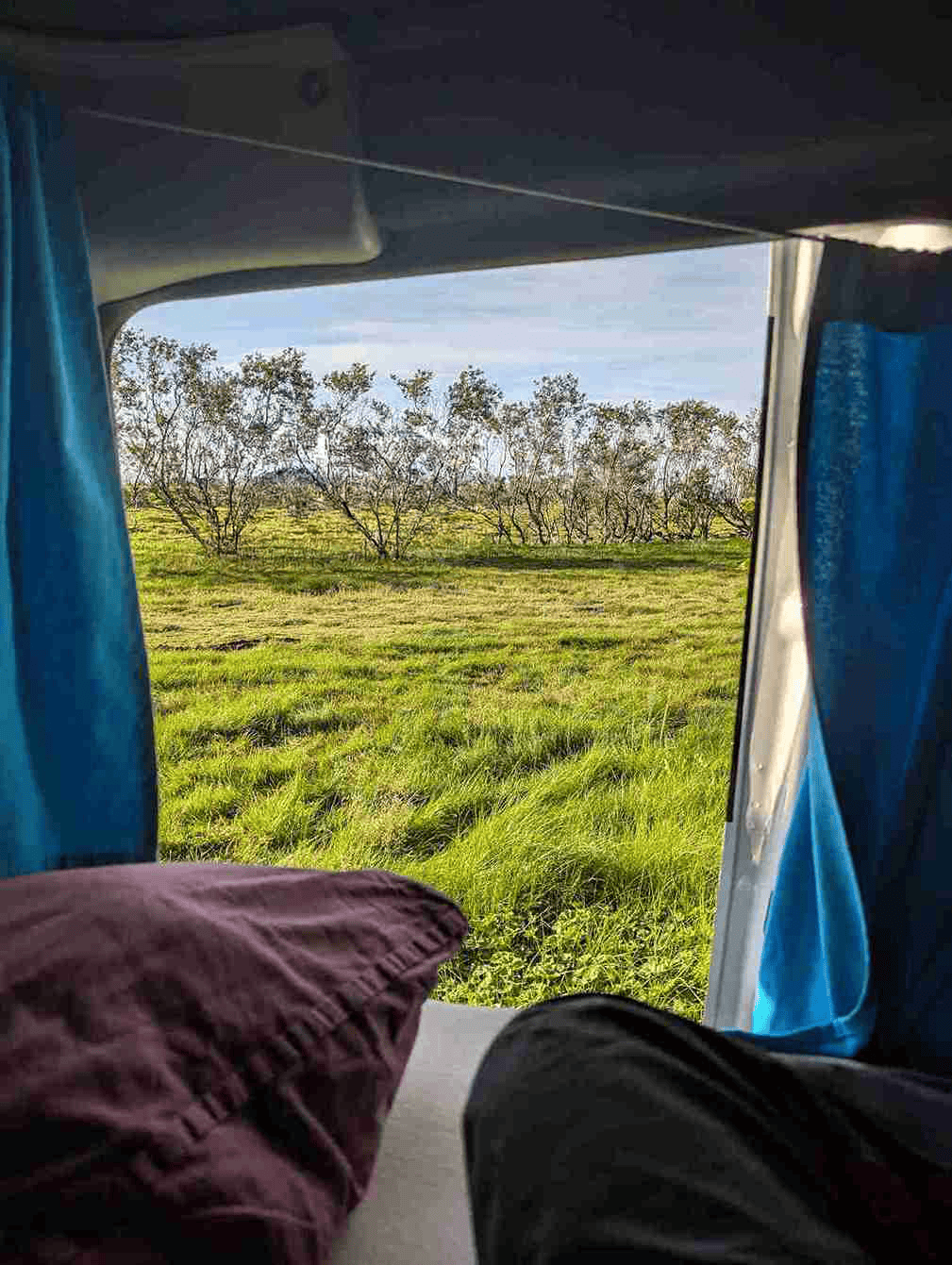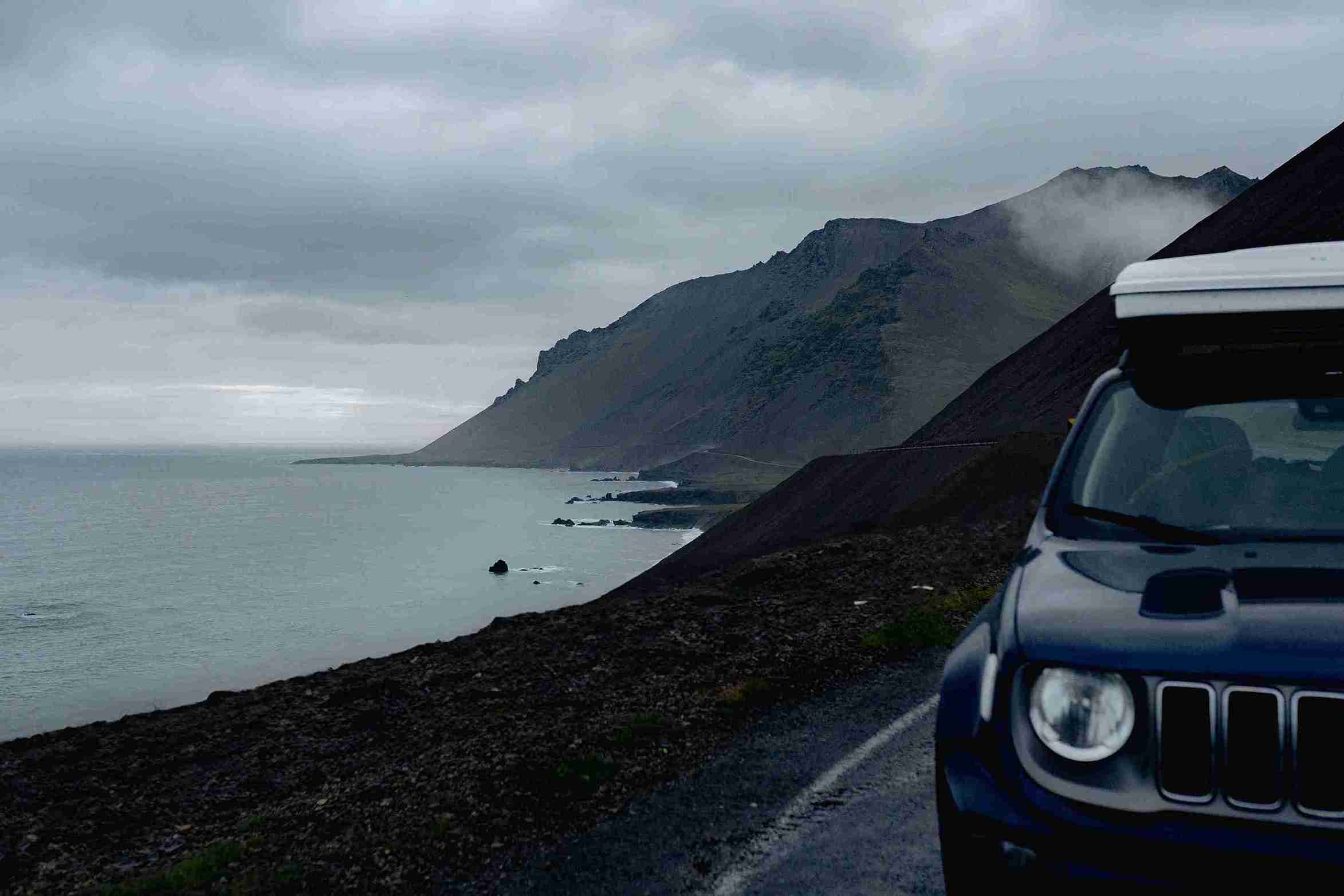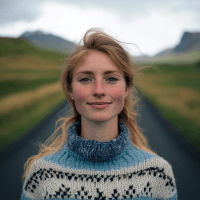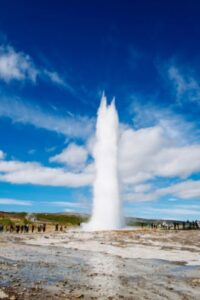 Eleven days was the time we had to travel around Iceland. It’s not enough, but we had the best time! Renting a camper van was the solution we found to travel more freely and embrace adventure in a less expensive but still comfortable way.
Eleven days was the time we had to travel around Iceland. It’s not enough, but we had the best time! Renting a camper van was the solution we found to travel more freely and embrace adventure in a less expensive but still comfortable way.
We started our journey in the Golden circle, through the Ring Road, in an anti-clockwise direction. Although there’s so much more to see and to talk about, we’re going to tell you some of the highlights of our travel. In the Golden Circle we felt our first impression about Iceland: spectacular force of nature!
One of our first stops was at Geothermal area in Haukadalur to visit the Geysir and the powerful Strokkur. Here we could see the big column of water with 20 to 40 meters high exploding and marveling everyone that was there waiting for that phenomena.
Next on our travel plan was the two stages waterfall, Gullfoss. It’s incredible the amount of water that travels through this river, crushing down into the rocks and creating a rainbow that frames this beautiful view. Legend has it that there’s a treasure at its bottom. For us the treasure was the waterfall itself.
Since Iceland is known for its many waterfalls, the next day we planned to visit four of them: Seljalandsfoss, Gljúfráfoss, Skógafoss and Kvernufoss. Each of them having its unique features.
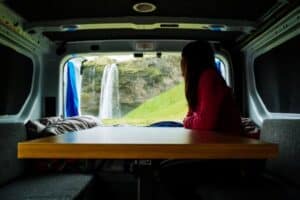 The first one is known for the path that goes all the way behind it, allowing the visitor to get into de water spray and have a different perspective of the waterfall.
The first one is known for the path that goes all the way behind it, allowing the visitor to get into de water spray and have a different perspective of the waterfall.
Gljúfráfoss is right next to Seljalandsfoss, and it is hidden in a cracked cliff that can be reached passing through the water. We manage successfully to keep our feet dry by stepping stone by stone into the cliff, although everything else got wet. Thankfully we could change clothes in our home in four wheels.
29 km east in the Ring Road, we found ourselves in another huge waterfall: Skógafoss. It falls in a shape of a perfect curtain of water and we were able to climb up 527 steps and appreciate an amazing view from the top of the waterfall.
After a little walk from the Skógar Museum and following a path through a beautiful canyon (that could easily be a home for elves), we found Kvernufoss: a less touristic but mystical waterfall where you can also walk behind. We had it all for ourselves and its beauty made it one of our favorite places in Iceland.
But Iceland is not only waterfalls. Along the road we saw huge Glacier tongues coming out of the mountain valleys. We had never been to a Glacier and, as we didn’t book any guided expedition, we wanted to, at least, get as close as possible to one. So we found our way to the parking area near Sólheimajökull Glacier and started the path that would take us right next to it. The sight was mesmerizing! The size, the shapes and the contrasting colours between the dark of the sediments and the white of the ice were truly amazing.
The day was already long so we decided to camp in Vík í Mýrdal and rest in our van. In the next morning we visited Reynisfjara, a black sand beach near Vík, where we saw basalt columns, Dýrhólaey, caves and the lovely puffins.
One of the highlights of our trip to Iceland was the visit to the Fjaðrárgljúfur canyon. It is a magnificent place, full of different colors and shapes. It is almost possible to imagine the water flowing and shaping the rock in a very long time-lapse.
At Skaftafell we did a little hike to Svartifoss, a waterfall with a very unique surrounding, shaped with dark basalt columns. The name has its origin in this particular feature (svart = black, foss = Waterfall).
After we spend the night there, we hit the road till our next destination: Jökulsárlón glacial lagoon. There, the huge icebergs flow down the stream in gorgeous blue water. This is a truly breathtaking panoramic view, within a close distance from the icebergs and the glacier in the background, which is very exotic for these two southern European travelers. We were lucky to see a big seal appearing at the surface, before diving again in the ice blue lagoon.
On our way to the East Fjords we passed by Stokksnes Mountains where we had a funny experience. On the South side of the mountain ridge we couldn’t see much. Thick clouds covered the peaks which was disappointing. We passed through a magic tunnel and on the other side we found a completely different place. Beautiful mountains, blue sky and a sunny day accompanied us through the scenic road between snowy mountains and fjords that took us to Seyðisfjörður.
Seyðisfjörður is a very welcoming and cosy little village protected by mountains. It is located at the end of a fjord and is as colorful as the street that faces the little blue church. This charming village became our favourite in the whole trip. Definitely, it’s an awesome place to stay.
We heard about Stuðlagil Canyon and we were really excited to visit this less known place. To get to this picturesque canyon, we parked our camper van near Klaustursel farm and hiked for about 5 km. It’s totally worth it. Not only the canyon itself is very beautiful with the bended basalt columns and its green/bluish Jökla River, but you can also appreciate a pretty waterfall midway, surrounded by dozens of basalt columns.
Our travel proceeded Northwards to the Mývatn area. Near this huge lake we found a very strange landscape: Hverir. In this geothermal active area we can find boiling muds, fumaroles surrounded by sulfur colored ground and smoke that rises also from the hills in the background. An otherworldly view.
A few km further, we stopped for dinner with a view in our camper van. We cooked the food of the gods admiring their waterfall, Goðafoss, in a calm environment and with an amazing midnight sunset golden light.
Turf houses are a typical architectural feature in Iceland. We couldn’t miss to, at least, visit a couple of them. While traveling west, we visited a Turf Church and a Turf Farm. The first one, Víðimýrarkirkja, is one of the few turf churches left in Iceland and it’s worth the visit. Not very far, you can also visit Glaumbær turf farm and an interesting museum where you can get an idea how people lived in those farms.
Our next aim was to find a mystical aquatic creature… or at least a rock that looks like it! Hvítserkur, is a peculiar rock formation that resembles some kind of sea creature or dinosaur. To get there, you’ll have to carefully drive through a gravel road which can take a while, but it pays off.
After a long drive, we arrived to Drangsnes under pouring rain, and stopped for the night. The highlight of this village is the three hot pots next to the fjord. We went there, first thing in the morning, and we had a truly Icelandic experience: socialise in the hot pots. While relaxing in the hot water, with a great view, we exchanged experiences with a nice Spanish-German couple who had a van just like ours.
We had had a couple of hard long driving days, so we decided to pace down a little bit and changed our plans of going north to the Westfjords. Instead, we shortcut to the Snæfellsnes peninsula where we went to the Bjarnarhöfn Shark Museum. But first, we stopped next to a farm with some adorable and beautiful horses that decided to meet us by the fence. At the Museum, we learned about the history and the process of the rotten shark meat as well as tried a little bit of this typical delicatessen.
Before stopping at Ólafsvik, we passed by the well known Kirkjufell. The next day, we headed to Djúpalónssandur where we found many interesting features: iron debris of an old wrecked boat, two little pools and amazing rock formations as well as a beautiful view of this dark beach.
A place we definitely recommend is the Snæfellsnes visitor center. This free entrance museum has a lot of interesting information about the peninsula, not only concerning the fauna and flora, but also some history about the human activities in the area. Not very far from the visitor center, near the lighthouse, we found a very interesting and rather odd exhibition made by school kids in an old fisherman’s house.
On the path between Arnastapi and Hellnar we had an overview of the peninsula’s south coast geology closely linked with Snæfellsjökull volcanic activity.
Still on the South coast, but further east, we visited a beautiful black church, Búðakirkja, and then we went to Ýtri tunga. On this beach we were welcomed by a seal colony, which we were lucky to see from a close distance in their natural habitat. On that moment, we felt even more connected and in harmony with nature.
While heading south to Reykjavik, we made a little detour to visit Grábrók crater. This is the biggest of three volcanic craters in the zone which you can walk through a path and stop in a couple of viewpoints. From there, you can easily see where the lava had been expelled and imagine the eruption moment.
We camped in Akranes, across the bay from the capital city, where we had an awesome relaxed time. Advised by the campsite lady, we went to the IA Akranes Swimming pools. This club is known for many Icelandic football titles. Football was also the theme for a conversation in the hot pools about the upcoming world cup where Iceland was competing for the first time.
Our trip was coming to an end. On our last day we passed by Reykjavik, where we had been before our road trip around the country. There are a lot of things to do and see in this city, but we’ll keep in our memories the breathing sound of the two whales we saw in the calm waters of the Reykjavik bay. They accompanied us from the Harpa to the Sólfar under the midnight sun on our second day. In this last one though, we just had time to walk around and have lunch before we hit the road again to our last destination: the Blue lagoon.
We couldn’t leave Iceland without experiencing the turquoise silica rich waters of the most famous lagoon. We passed 4 hours in a deeply relaxing environment surrounded by lava fields and we felt like we could stay there for another couple of them.
All these white nights have passed and we were surely going to miss them. Along this adventure, we fell in love with Iceland. We traveled through extensive plains and lava fields, beautiful fjords and majestic mountains, always surprised and excited about what might come around the next corner of the road. It was time to pack everything and go back home, with the will to return one day.
Read more: Secrets of Summer Solstice
Happy Camping! #CamperStories
Iceland Travel Guides
If you like what you see, please subscribe to our YouTube channel!

